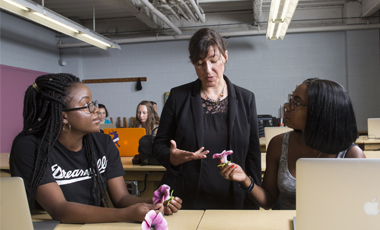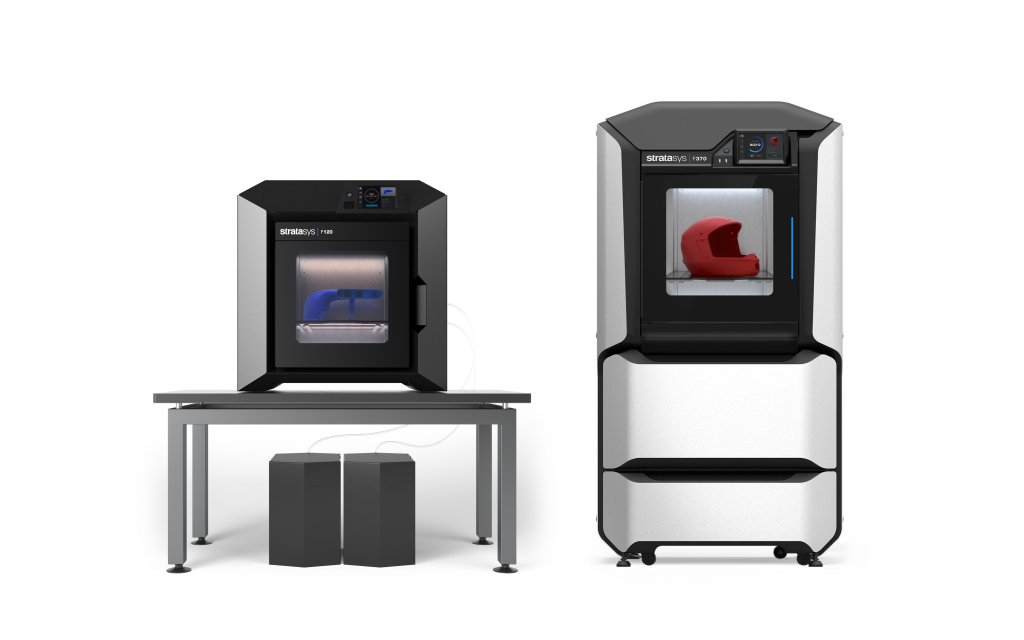Gina Scala is in charge of marketing Stratasys’ education efforts. She also is in charge of marketing the company’s entry-level F123 series 3D printers.The education market is huge for 3D printing. Far from formalized education and 3D Printing is a wide open subject. In our podcast we discussed it at length. Will it have an impact on education? On what level? Will it only be available to high school students? Kindergartners? Will it be the path through which 3D printing gains in broader adoption or a fad? We spoke to Gina to find out what she thinks and what Stratasys is doing on education.

What’s happening in 3D printing education?
Where we are seeing growth is in design schools, art schools, and in medical. A lot more areas are now taking an interest in 3D printing. They are integrating technology into curriculums and into their offerings. At the University level, people are looking at planning 3D printing more.
At some universities, they now have so many 3D printers that they use online maps to find all of the printers on campus. For the past years, there was organic growth all across the campus. Now we’re seeing universities looking more at growing intentionally. They’re looking at their needs and requirements more and are then deploying printers across campus or in labs.
We’re also seeing more and more graduate programs in 3D printing emerge as well.
For a university should I put a 3D printer on every desk, use a cluster or a lab with a bunch of different technologies in it?
It depends on your needs. Rapid Prototyping labs tend to have higher rates of technicians, so, for now, they have the highest productivity. Deployed printers that are used for a very specific thing do well also.
For a university that is just getting started the most important thing to do is to not have just one champion. You really will need two to three. I also wouldn’t recommend getting 40 small printers. Instead get one printer that gives you reliability and control, like the F120. You know it’s going to run and its simple to use. When you reach 70% productivity on that printer then get the next one.

For what levels of education is 3D Printing suited?
The first 25 F120’s went to high schools. Here they’re used as shared resources. They can let people focus on the learning and logistics of 3D printing without having to fiddle with the printer. Ease of use, plug, and play. Load your part and go. As time goes on the technology will get used more useful at lower grades.
Is lack of CAD ability holding 3D printing back?
Design for Additive Manufacturing is prerquisite to using these tools for advanced uses. This does mean that for some applications there is a barrier point. The knowledge and skills are technology are getting easier to use all the time. At some CAD packages have gotten simpler through things such as giving you primitives to use.

an F120 and a F370
What are some new things that you’re seeing?
Microfluidics is something that we’re seeing emerging applications in. We now have Advanced FDM in GrabCAD Print. This lets you change advanced settings such as infill/texture in Print without you having to go back to CAD. In jigs in fixtures for example on the manufacturing line, a worker could easily fix a fixture in the file in GabCAD.
We’re doing a lot of material innovation on the F123 series with things like TPU and a lot more will be coming to that platform. It is the most deployed 3D printer that Stratasys has ever had. They are more plug and print machines that make it easy and efficient for you to work with them. With a steel frame, linear rails kevlar belts and things like controlled airflow across the chamber, pound for pound they’re superior to the competition.
Subscribe to Our Email Newsletter
Stay up-to-date on all the latest news from the 3D printing industry and receive information and offers from third party vendors.
You May Also Like
Precision at the Microscale: UK Researchers Advance Medical Devices with BMF’s 3D Printing Tech
University of Nottingham researchers are using Boston Micro Fabrication‘s (BMF) 3D printing technology to develop medical devices that improve compatibility with human tissue. Funded by a UK grant, this project...
3D Printing Webinar and Event Roundup: April 21, 2024
It’s another busy week of webinars and events, starting with Hannover Messe in Germany and continuing with Metalcasting Congress, Chinaplas, TechBlick’s Innovation Festival, and more. Stratasys continues its advanced training...
3D Printing Webinar and Event Roundup: March 17, 2024
It’s another busy week of webinars and events, including SALMED 2024 and AM Forum in Berlin. Stratasys continues its in-person training and is offering two webinars, ASTM is holding a...
3D Printed Micro Antenna is 15% Smaller and 6X Lighter
Horizon Microtechnologies has achieved success in creating a high-frequency D-Band horn antenna through micro 3D printing. However, this achievement did not rely solely on 3D printing; it involved a combination...





























